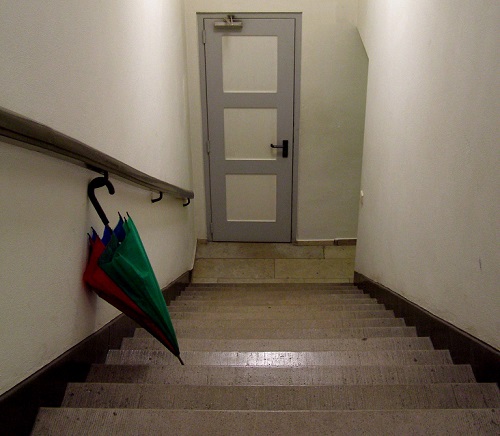
Where was my office? At the end of a dead-end hallway.
Very few people ever came to my office. Unless they were specifically looking for me. No one ever wandered by.
That was a bit of a metaphor back in 1981 when I started my job at the theatre company. The art—and the directors, actors, and tech staff—were the important people. The rest of us—administration—were the necessary evil. And the fundraising operation? Oh my gosh. Worse than a necessary evil!
Rather ironic, eh? Most nonprofit charitable organizations require some level of charity to thrive—even to survive.
Instead, organizations treat fundraising as a stepchild. Dead-end hallways. Sneers, or a bit of distaste. Siloed operations.
Fundraising is considered a means to an end, i.e., enabling mission.
Big warning: If that’s how you treat fundraising and your development staff…get prepared for losing donors, losing money, and getting a bad reputation.
You need a make over. A refresh. So, here goes…
Starting with organizational culture
Remember this: Research shows that an organization’s culture dramatically affects its effectiveness. Culture is pervasive, affecting all areas of the organization, including fund development.
Cultures form in any group, whether your book club, your board, or you organization. In fact, groups within a larger organization may have different cultures. Some cultures may be fairly explicit. But as David S. Pottruck and Terry Pearce wrote in Clicks and Mortar: Passion Driven Growth in an Internet World, “most are implicit, understood but not spoken, residing in the language and habits of interaction between the people.”
Corporate culture refers to the personality of an organization and the way your members interact and behave. Although culture is too rarely discussed, it pervades an organization and is transmitted from one individual too another.
Corporate culture, as defined in Mitroff, Mason, and Pearson’s Framebreak: The Radical Redesign of American Business, is:
“The set of rarely articulated, largely unconscious, taken-for-granted believes, values, norms, and fundamental assumptions the organization makes about itself, the nature of people in general, and its environment…organizational culture consist of the set of unwritten rules that govern acceptable behavior within and even outside of the organization.”
A culture of philanthropy
Philanthropic culture is a subset of organizational culture. A culture of philanthropy refers to your organization’s attitude toward philanthropy and fund development (fundraising).
Some people define philanthropy as voluntary action for the common good. Many talk about fund development as the engine that drives philanthropy, or, the essential partner of philanthropy.
As a charitable organization, an essential part of your organizational culture must include philanthropy. First, focus on culture, not strategy.
Why is a culture of philanthropy so important? Because philanthropy is not just about raising money. It’s not just another management function.
Philanthropy is part of the mission of the nonprofit/NGO corporation. You’re not just a zoo; you’re a zoo and a philanthropic organization. Indeed, it might be said that successful nonprofit/NGOs pursue two missions: program and philanthropy.
Organizations that operate with a culture of philanthropy understand three things: the value of organizational culture, the importance of philanthropy, and the inextricable link between philanthropy and fund development.
Sign up for our free newsletters
Subscribe to NPQ's newsletters to have our top stories delivered directly to your inbox.
By signing up, you agree to our privacy policy and terms of use, and to receive messages from NPQ and our partners.
Creating a culture of philanthropy
Effective organizations embrace a culture of philanthropy. Each volunteer and every employee feels it. Clients and donors recognize it whenever they connect with the organization.
Everyone in the organization embraces customer-centered and donor-centered…not just mission-centered and client-centered. Everyone in the organization, from the janitor to the chair of the board, understands that philanthropy and fund development are critical to organizational health and that each individual (both the janitor and board chair) has a role in the process.
First and foremost, everyone is an ambassador for the organization’s service, and for philanthropy and fund development. Being an ambassador means doing one’s own job well, understanding how all the various jobs in the organization create one integrated system, and—most especially—treating all of the organization’s customers (clients, donors, volunteers, community people, etc.) with care and respect.
Everyone is also an ambassador for philanthropy and fund development. If the quality of the program is not good enough, it doesn’t matter what the fundraiser does. If board members don’t talk enough about the organization with their friends and colleagues, it doesn’t matter how hard the executive director tries to raise funds. If the receptionist isn’t customer-centered, the best direct mail solicitation will not be as effective as it can be.
Gift size just doesn’t matter. Everyone respects and honors all donors. In fact, the best culture of philanthropy sees philanthropy as a democratizing act.
Board and staff responsibility
Many organizations hire development staff or assign development to their executive director. All organizations should establish a board-level development committee.
But regardless of staff or committee, the board is ultimately responsible for the financial health of the institution. That means that the board is ultimately responsible for fund development.
The board’s fund development committee is responsible to provide leadership and to institutionalize the process of development within the board. The staff provides leadership and information and support and serves as the resource for best practice and the body of knowledge.
However, the best staff and the best committee engage each and every board member—and other volunteers—in the process of fund development. And the best development staff engages all their colleagues in the process of philanthropy.
Every board member is responsible to do the following:
- Understand and promote the culture of philanthropy.
- Serve as a philanthropic ambassador within the organization and outside in the community.
- Give an annual contribution to the best of personal ability. When there are special campaigns, give an additional gift.
- Cultivate relationships on behalf of and in support of the organization.
- Help identify and cultivate prospective donors and fundraising volunteers.
- Participate in some fundraising task(s) every year.
Every staff member is responsible to do the following:
- Understand and promote the culture of philanthropy.
- Serve as a philanthropic ambassador within the organization and in the community.
- Program staff (or any individuals with direct contact with clients and community) is expected to help cultivate relationships on behalf of and in support of the organization. This doesn’t mean help fundraise. It means being sensitive to and aware of others, providing them with quality service, and paying attention to their interests. Most importantly, program staff needs to share stories, particularly with development.
- Staff is also expected to work with development staff to support grant applications and other development activities related to program.
- (And, organizations should give their staff an opportunity to give a charitable gift.)
- P.S. And, of course, the CEO and chief development officer must give.
In conclusion
All this is the culture of philanthropy. An attitude. An understanding. A behavior. With a culture of philanthropy firmly established, fund development is more effective.
So what’s happening in your organization?
For more information about your organization’s infrastructure—including values and leadership, learning organization and systems thinking, organizational culture and ongoing conversation, participatory decision-making and well-managed change—see Strategic Fund Development: Building Profitable Relationships That Last, 3rd edition. This book also features sections on institutional strategic planning, fund development planning, donor and prospect cultivation and communications, and enabling of volunteers.












